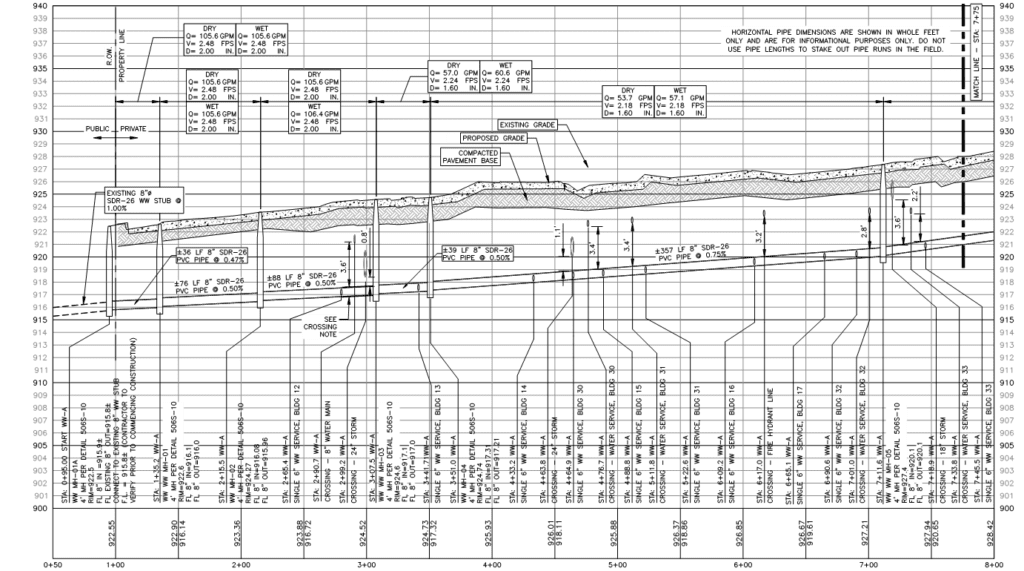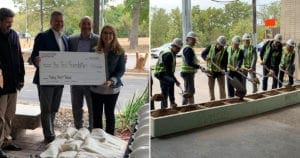
Northline Breaks Ground in Leander, Texas
Covering approximately 115 acres, Northline is anticipated to include a mix of complementary uses, including retail, office, residential, hotel, and parks.
Learn from award-winning professionals — explore our whitepapers, blogs, and the latest industry updates.
Join our dynamic organization of engineers, land surveyors, landscape architects, environmental scientists, and architects!
Talk to a market leader today! We’ll answer any questions you have about our professional services.

Sewage flows within a sanitary sewer system are divided into two major categories: wet weather flows and dry weather flows.
Wet weather flows include sewage flows and runoff that infiltrate into the sanitary sewer systems during a storm event. Wet weather flows also include groundwater flows that enter through defective pipe joints, connections and/or manhole walls.
Dry weather flows represent all flows within the sewer pipes on a typical day without precipitation and the results of lower flow to separate sanitary sewer systems. During dry weather flow, insufficient flow velocities can increase the retention time within the pipes and channel. Therefore, these flows could result in undesirable sedimentation of solid particles and biological/chemical reactions.
When determining wastewater flow within the City of Austin, residential single-family units shall be assumed to produce an average wastewater flow of 245 gallons per day and industrial wastewater flows will be evaluated on a case-by-case basis. External contributions are accounted for by including 750 gallons per day per acre served for inflow and infiltration. For sewer systems in the Edwards Aquifer Zone refer to the Texas Commission on Environmental Quality (TCEQ) requirements (Chapter 213). Per TCEQ, strict attention shall be given to minimizing inflow and infiltration.

The peak dry weather flow is derived from the formula:
Qpd = [(18+(0.0206 × F)0.5)/(4+(0.0206 × F) 0.5)] × F
where: F = 70 gal./person/day x population/1440
= average dry-weather flow in gpm
The peak wet weather flow is obtained by adding inflow and infiltration to the peak dry weather flow. When designing for an existing facility, flow measurement shall be used in lieu of calculations for the preexisting developed area.

WGI is a national design and professional services firm leading in technology-based solutions for the construction of public infrastructure and real estate development. At WGI, we’re providing Tomorrow’s Infrastructure Solutions Today.

Covering approximately 115 acres, Northline is anticipated to include a mix of complementary uses, including retail, office, residential, hotel, and parks.

The future is fast approaching and 5G is here. Discover how you can fully leverage what 5G technology will ultimately unleash.

By Shonda Novak – Austin American-Statesman Click Here to view the original article. A developer has released new details and images of an office tower

Developing high-rise on 10,000-square-foot lot would be a challenge, but not unprecedented.

Do you have questions about parking reductions and incentives in the City of Austin? We’re here to help!

The fundraising event helps The Trail Foundation fund improvements to Waller Beach Park as part of the Rainey Street Trailhead Project in Austin, TX.
You’ve been searching for a place like WGI. We look forward to meeting you soon.
Sign up to receive emails to hear our latest news and achievements in our monthly newsletter.
Enter your zip code, and we’ll personalize your experience with local projects, office locations, team members, and more.
WGI supports its associates with meaningful opportunities for growth, strong benefits and perks, while we work collaboratively with clients and co-consultants to shape and improve communities.






WGI is a dynamic organization with opportunities nationwide for engineers, land surveyors, landscape architects, environmental scientists, and architects.